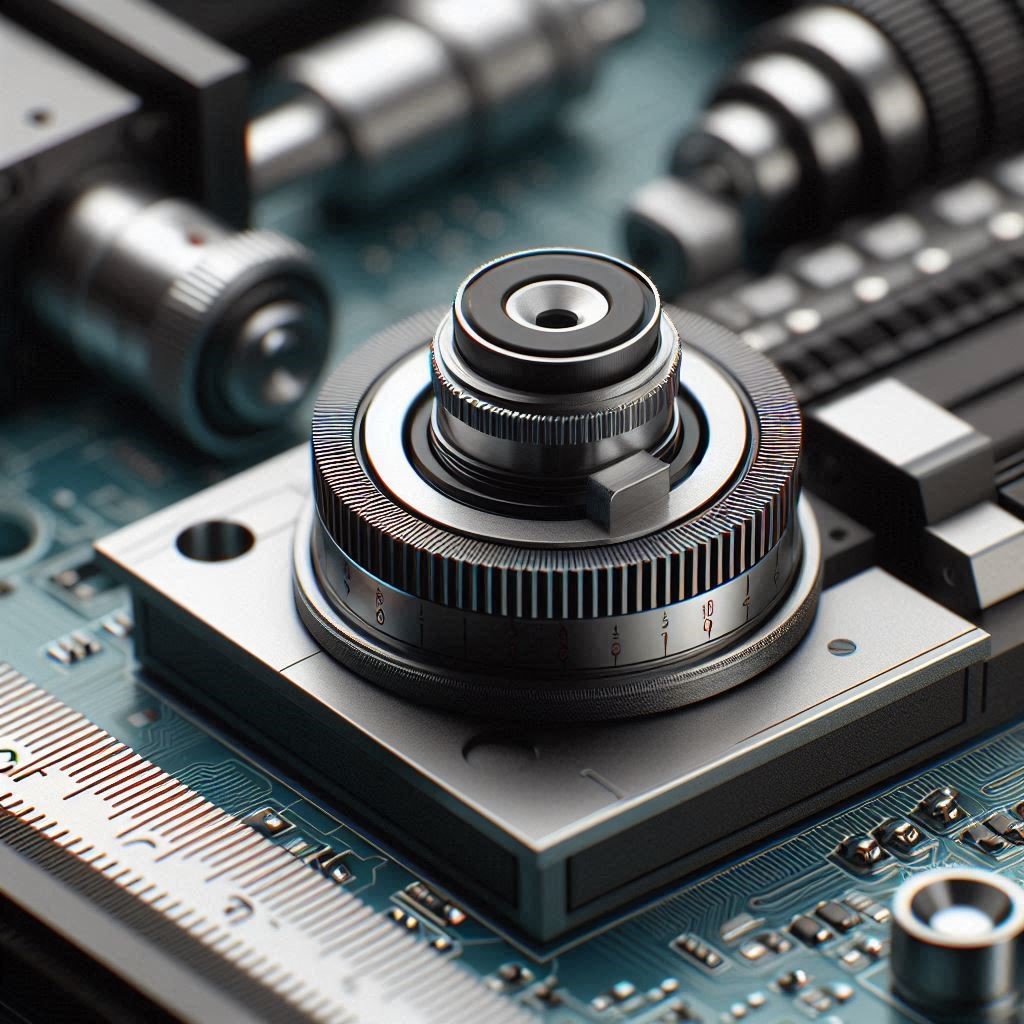The rise of Artificial Intelligence (AI) is fundamentally reshaping industries across the globe, and the encoders market is no exception. Encoders, which are vital components in motion control systems, are being revolutionized by AI-driven technologies. These compact devices are designed to convert the mechanical motion of a shaft into digital signals, providing feedback for precise control in various applications, from robotics to industrial automation. As AI continues to evolve, it brings new capabilities to encoders, improving their performance, accuracy, and application scope.
Delves into the ways AI is transforming the global encoders industry, highlighting key trends, technological innovations, and the implications for end-users in diverse sectors.
1. Enhanced Precision and Performance
AI-Driven Error Correction and Calibration
In traditional encoder systems, errors such as signal distortion and mechanical wear can compromise performance. AI algorithms can continuously monitor these errors, automatically calibrating encoders to maintain high precision. These AI-powered encoders use machine learning models to identify patterns in data and predict potential issues before they affect performance. This capability significantly reduces downtime, enhances the reliability of systems, and ensures that operations run smoothly without manual intervention.
For example, in robotic applications, where precise motion control is paramount, AI-equipped encoders provide feedback that helps adjust for any inconsistencies in speed or positioning, ensuring smoother, more accurate operations.
2. Real-Time Data Processing and Analysis
Smart Sensors and Data Integration
One of the most significant advantages of AI integration in encoders is the ability to process data in real time. Traditional encoders rely on basic signal transmission, often requiring external systems to process the data. AI-powered encoders, however, can directly analyze data on the edge, reducing the need for separate processing units and enabling immediate feedback for faster decision-making.
For industrial automation, this real-time data processing means that systems can respond instantly to changes in operational conditions. In sectors like manufacturing, where motion control and positioning are critical, AI-integrated encoders improve efficiency by offering continuous performance analysis and enabling predictive maintenance. This data-driven decision-making helps optimize production lines, reduce waste, and minimize energy consumption.
3. Predictive Maintenance and Reduced Downtime
AI and Machine Learning for Long-Term System Health
Encoders, like other mechanical devices, are subject to wear and tear over time. In traditional systems, wear can lead to unexpected failures, leading to costly downtime and repairs. However, with AI, encoders can predict when components are likely to fail, enabling predictive maintenance.
AI algorithms can analyze historical performance data from encoders and identify early signs of wear or mechanical issues. This predictive capability allows operators to perform maintenance tasks only when necessary, reducing unnecessary downtime and maintenance costs. In industries where continuous operation is critical—such as automotive manufacturing or aerospace—AI-powered encoders ensure that machinery runs at peak performance, preventing sudden failures that could disrupt production schedules.
Download PDF Brochure @ https://www.marketsandmarkets.com/pdfdownloadNew.asp?id=14566162

4. Increased Adaptability in Complex Systems
AI and Flexibility for Multi-Application Systems
AI’s integration into the encoder market also increases the adaptability of encoders in complex and dynamic environments. Encoders traditionally have specific roles, such as rotational speed measurement or positioning feedback. However, AI allows for the integration of various encoder functionalities into a single device, making it suitable for a wider range of applications.
For example, in automated material handling systems, AI-enhanced encoders can adjust their feedback based on varying weights, speeds, or environmental conditions, all while maintaining precision. These versatile encoders are able to operate in high-precision industries, including robotics, medical devices, and smart manufacturing. They can self-calibrate to meet the specific needs of each system without requiring additional hardware adjustments.
5. Enhanced Integration with Industry 4.0
AI-Powered Encoders in Smart Factories
AI-driven encoders are playing a pivotal role in the ongoing evolution of Industry 4.0, which emphasizes smart manufacturing, automation, and data integration. Encoders integrated with AI not only provide precise feedback but also communicate directly with other smart systems within the factory.
For example, in a smart factory environment, encoders connected to a central Industrial Internet of Things (IIoT) platform can transmit real-time performance data to cloud-based systems. AI algorithms can then analyze this data to make decisions regarding production flow, resource allocation, and process optimization. Encoders, therefore, become an essential part of the closed-loop control systems that drive efficiency, productivity, and cost savings in modern factories.
By interconnecting encoders with other smart devices, such as sensors, actuators, and control units, AI helps create intelligent ecosystems where every component communicates seamlessly, leading to optimized operations and reduced human intervention.
6. New Opportunities for Advanced Applications
AI and the Future of Encoder Technologies
As AI continues to evolve, the applications of AI-driven encoders expand beyond traditional industries. Some of the emerging applications include:
-
Autonomous vehicles: AI-powered encoders contribute to precise movement control and navigation, supporting systems like autonomous driving and drones.
-
Aerospace: Encoders used in aircraft control systems and satellite applications benefit from AI’s ability to manage complex motion and positioning data in real-time.
-
Medical robotics: In surgical robots, AI-enhanced encoders improve the accuracy and reliability of movements, leading to better patient outcomes.
With continued advancements in AI, the potential for new encoder applications is virtually limitless. This convergence of AI and motion control technology is setting the stage for even more innovative solutions across industries.
The integration of Artificial Intelligence (AI) into the global encoders market is driving significant innovations across multiple industries. From improving precision and performance to enabling predictive maintenance and reducing downtime, AI-powered encoders are making motion control systems smarter, more efficient, and more adaptable. As AI continues to evolve, encoders will become even more intelligent, integrated, and capable, unlocking new opportunities across sectors like robotics, automotive, aerospace, and smart manufacturing.
For businesses and operators, the adoption of AI-driven encoders offers a competitive edge in optimizing operations, reducing costs, and driving innovation in the next wave of industrial automation.
